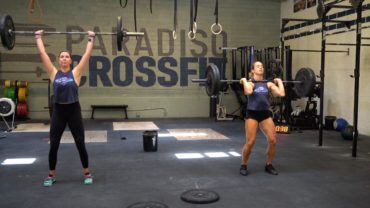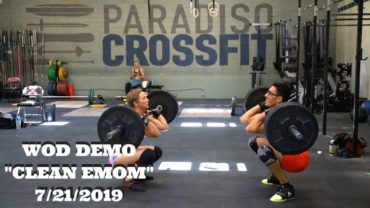Visual Perspicacity
Saturday, December 10, 2011
DROM
Row 100 m arms only
Row 100 m back and arms only
Row 100 meters
Shoulder Prep
Deadlift 3-3-3-3 (challenging but not too heavy)
Rest as needed
Complete as many rounds as possible in 20 minutes of:
Row 250 meters
25 Push-ups
Rest as needed
30 seconds each
Samson Stretch
Active bar hang
POSE Farmer’s run!
Visual Perspicacity can be defined as keenness of mental perception and understanding; discernment, and penetration. You cannot be a good coach or trainer without it, and all great coaches develop this ability the longer they teach athletes. Read and enjoy the beginning of our own Frank Agzarian’s journey, and his budding insights as our Track coach:
“After teaching Pose running for a while now, I secretly watch and analyze every persons running stride. Don’t worry, I don’t judge, I’m just interested to see people’s movement patterns as they run. I do this in the gym, and even while driving through town, I just can’t help it now! It’s like Zeb and the back squat, I’m almost positive he cannot see someone lift without automatically analyzing the key points of performance. One thing that I see a lot of, in and out of the gym, is people running in vibrams or minimalist shoes. I’m especially interested when I see someone like this because a lot of people believe that simply wearing these shoes will automatically transform them into better runners. The belief goes that in the absence of a big cushion on your shoe, the body will learn through trial and error that it cannot land on the heel and will naturally transition to a more efficient and softer landing on the ball of the foot.
Through my personal observation I believe this is false. The majority of people I see in barefoot shoe are still landing on their heels. This is because it is very difficult to undo 20+ years of programmed movement patterns. You can make a lasting change in your stride, but it must come through conscious practice and skill work. Form is much more important than the actual shoes you are wearing. Brian Mackenzie and Christopher McDougal both agree, and McDougall recently touched on this issue in an article for the NY T when talking about the NYC Barefoot Run.
Vibram and Merrell both stress the new running technique required on their websites. Below is an excerpt from “Running in Vibram Fivefingers: A Step-By-Step Guide” from their website. Interestingly enough, everything they say is right in line with Pose running:
Barefoot Technique: A good landing should feel gentle, relaxed, and compliant. Many experienced barefoot runners suggest trying these two phases to learn the recommended forefoot technique:
Phase 1: FiveFingers runners typically land on the ball of the foot towards the lateral side. It’s best to land with the foot nearly horizontal, so you don’t work your calves too much or put too much stress on top of the foot.
Phase 2: After the front of your foot lands, let the heel down gradually, bringing the foot and lower leg to a gentle landing. (It’s like when you land from a jump, flexing the hip, knee and ankle.) Again, the landing should feel soft, springy, and comfortable.
Important points to remember:
• Do not overstride (this means landing with your foot too far in front of your knee and hips). Overstriding with a forefoot or midfoot landing requires you to point your toe more than necessary, adding stress to the calf muscles, achilles tendon, and arch of the foot. One way to avoid overstriding is to raise your cadence to 180 beats/min. Practice with a metronome or an up-tempo song – you’ll notice that it is impossible to overstride at this frequency. Make sure you aren’t leaning too far forward. Your body should be almost upright with your feet directly below your hips.
• Land lightly. Not sure if you’re landing lightly? Try running totally barefoot on a hard, smooth surface (e.g. pavement)that is free of debris. Sensory feedback will quickly tell you if you are running too hard. Light runners are quiet runners. Try to make as little noise as possible when you land.
• Do not heelstrike. If you just can’t seem to get the feel for landing on the forefoot, try the following:
– Walk backwards with a slight forward lean. Then speed up, making sure there are no obstacles in your way.
– Walk or run up a hill. It is practically impossible to land heel first
Here is a video on proper running technique from Merrell’s website. Again, everything is in line with Pose run
Mechanics, Consistency, then Intensity. Happy training!”
Post thoughts to comments.
















